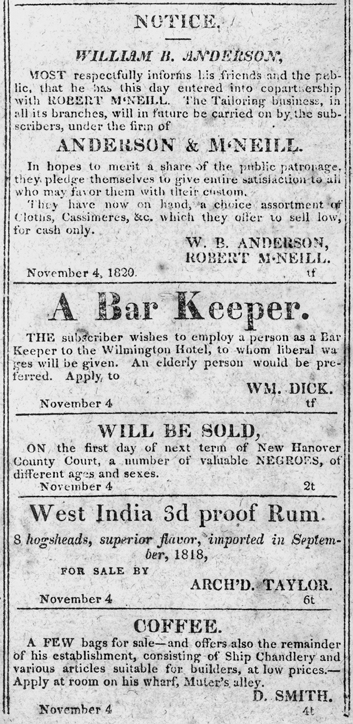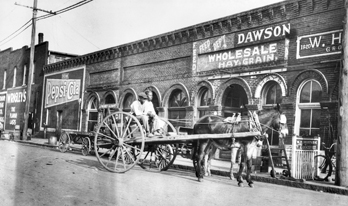
Broadsides were a popular advertising medium throughout the colonial and antebellum periods. Unlike newspapers, broadsides were printed on only one side of a sheet of paper. They were handed out individually and were used to advertise everything from theatrical performances, railroad schedules, store openings, and rewards for freedom seeking enslaved people to the messages of poets and other writers, political parties and candidates, religious societies, reform organizations, and businesses.
Magazines (periodicals or journals) began appearing in North Carolina around the middle of the nineteenth century. The decision to include advertising varied with the publication, with many accepting ads relevant to their trade or profession. For example, the North Carolina Journal of Education, established in 1857 under the editorship of Calvin H. Wiley, ran ads for schoolbooks, booksellers, academies, and book and job printing. The Medical Journal of North Carolina, begun just prior to the Civil War, included ads for medical books, druggists, and the Medical College of Virginia and its hospital. Other magazines such as the North Carolina Historical Review, Popular Government, or Appalachian Journal did not include advertising.
North Carolina entered the world of radio advertising in April 1922 with the establishment of the state's first commercial radio station, WBT in Charlotte. Advertisers increasingly employed the power of radio, and by the 1950s, television, to carry their message to thousands, even millions, of North Carolinians in an instant.
The first advertising agency in North Carolina is believed to have been Bennett Advertising, established in 1922 in High Point by Harold C. Bennett. The firm continued under that name until the 1970s, when, following Bennett's retirement, it became Behrends and Company, with Richard D. Behrends as president. Most of Bennett's accounts were with out-of-state clients. By 1965 there were more than 50 reported advertising agencies in North Carolina. By 2000 the number of agencies capable of assuming responsibility

Modern advertising in North Carolina, as in every U.S. state, is sustained by the growth of high-tech media, which still includes radio and television but since the mid-1990s has become increasingly dominated by the Internet. Even the somewhat homely, old-fashioned highway billboard has been updated: many now feature computerized screens capable of changing images to advertise a variety of products from one location. Controversy has developed over the legality and suitability of these billboards and other low-tech versions in certain sections of the state's highway system. Various public policy groups have fought against billboard usage with the backing of the federal Highway Beautification Act, an environmental law passed by Congress in 1965.